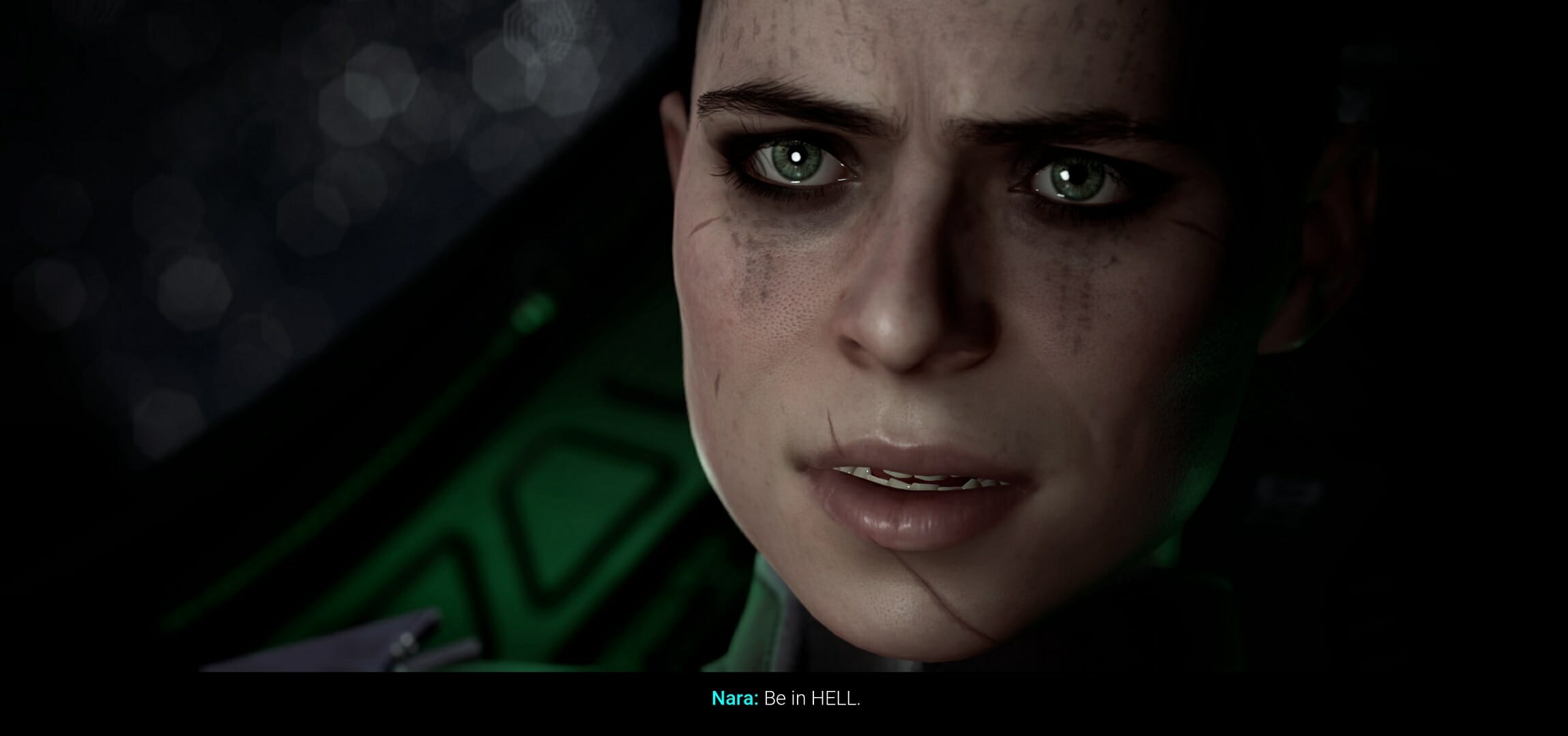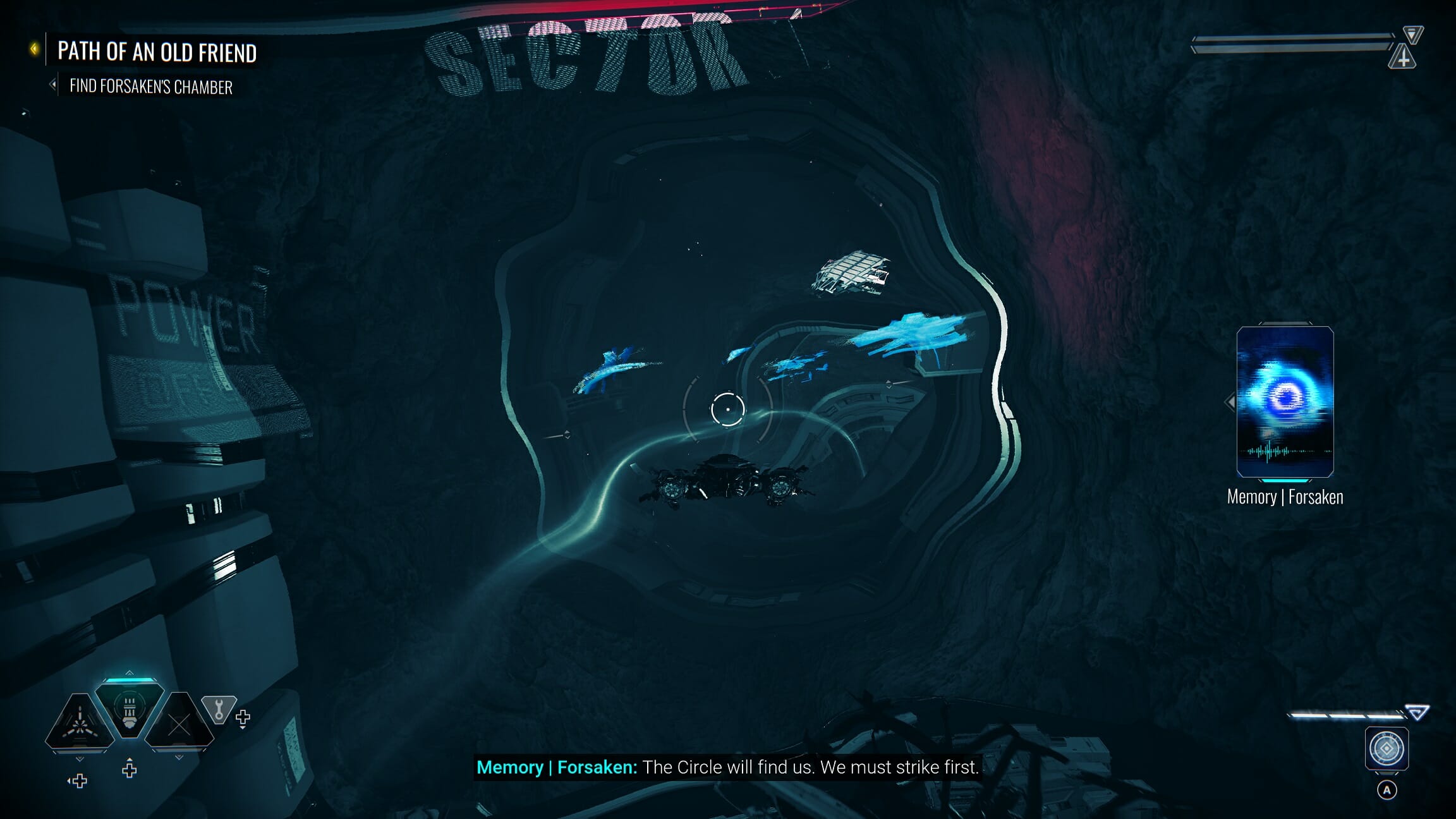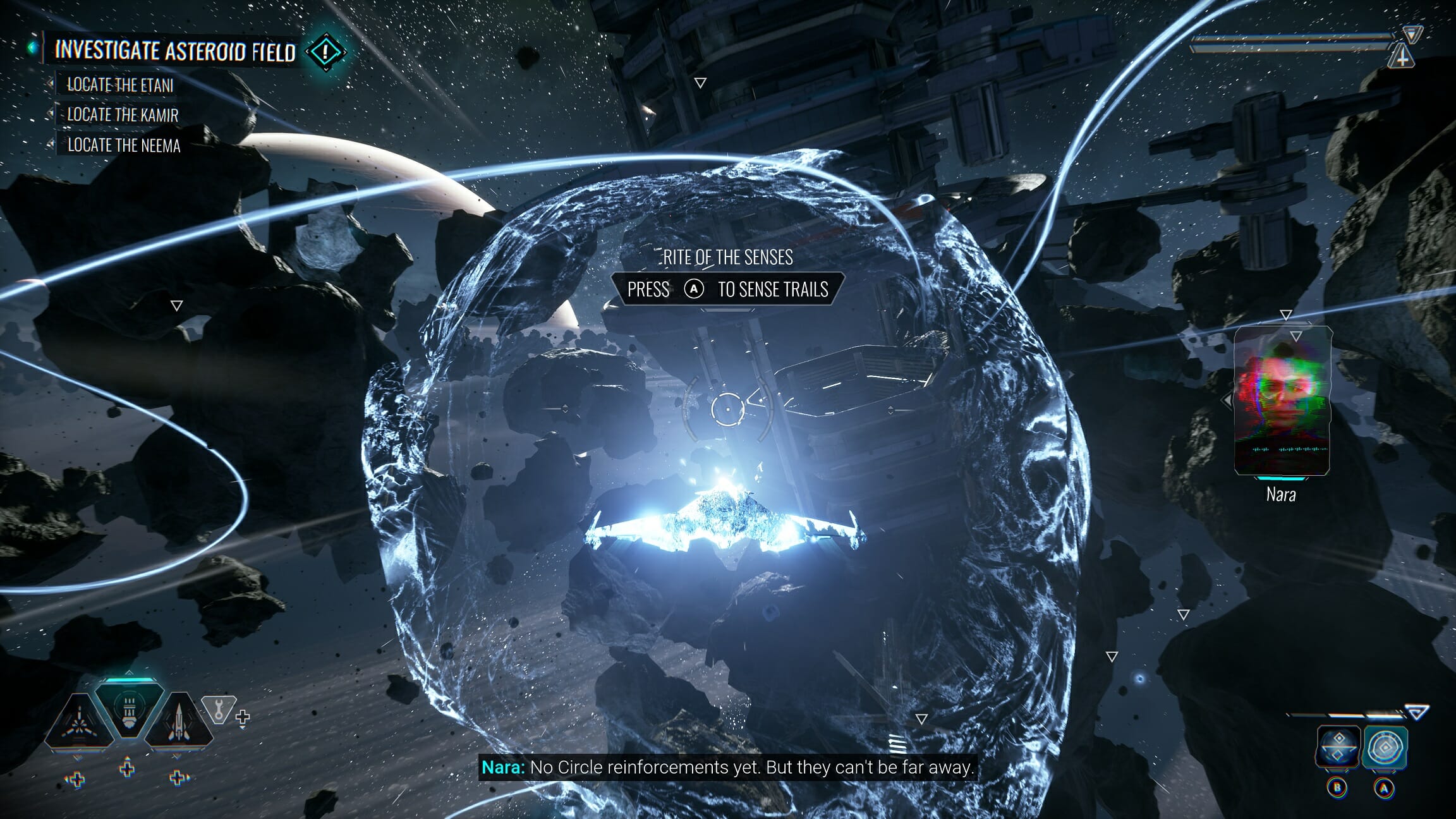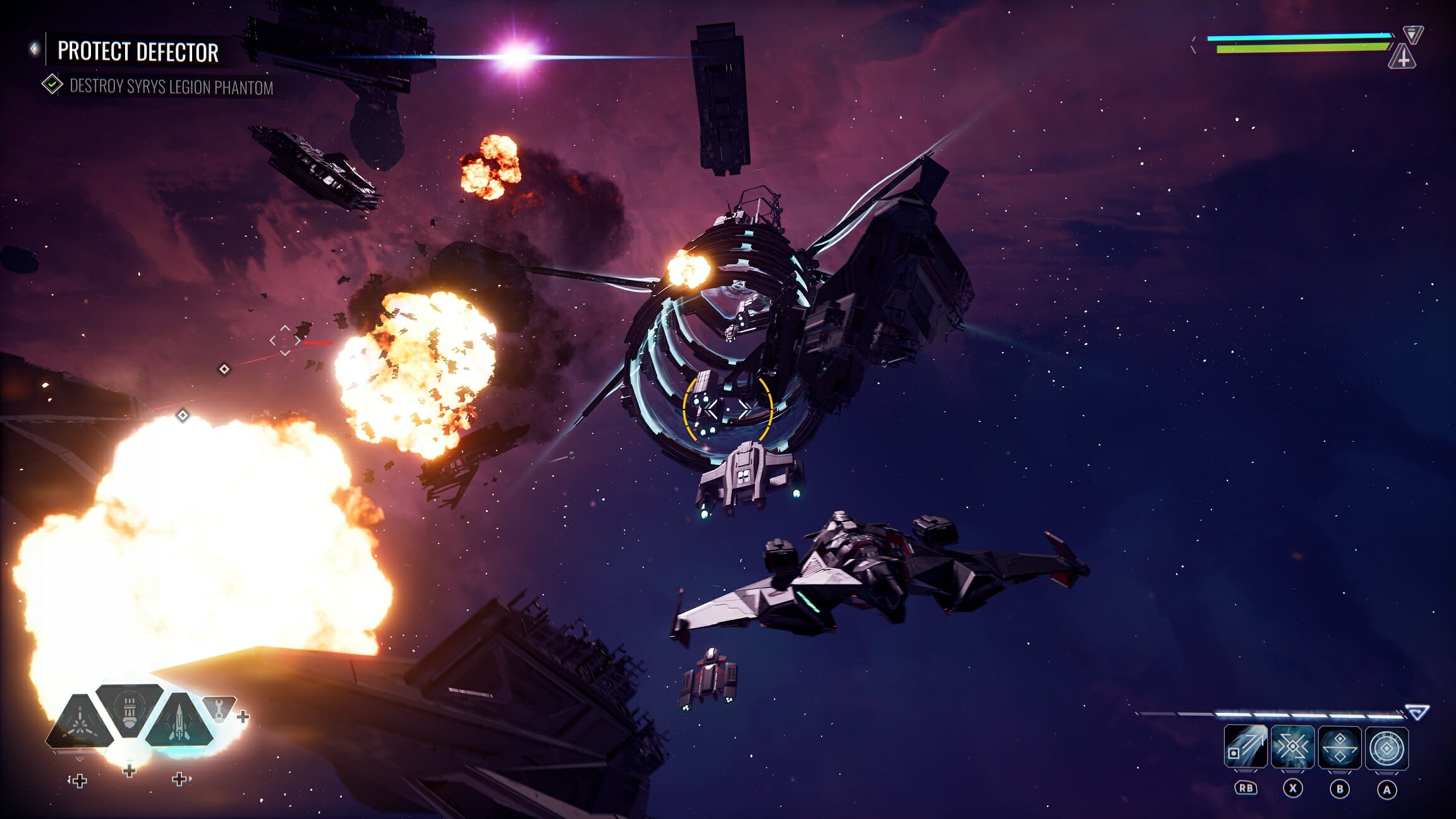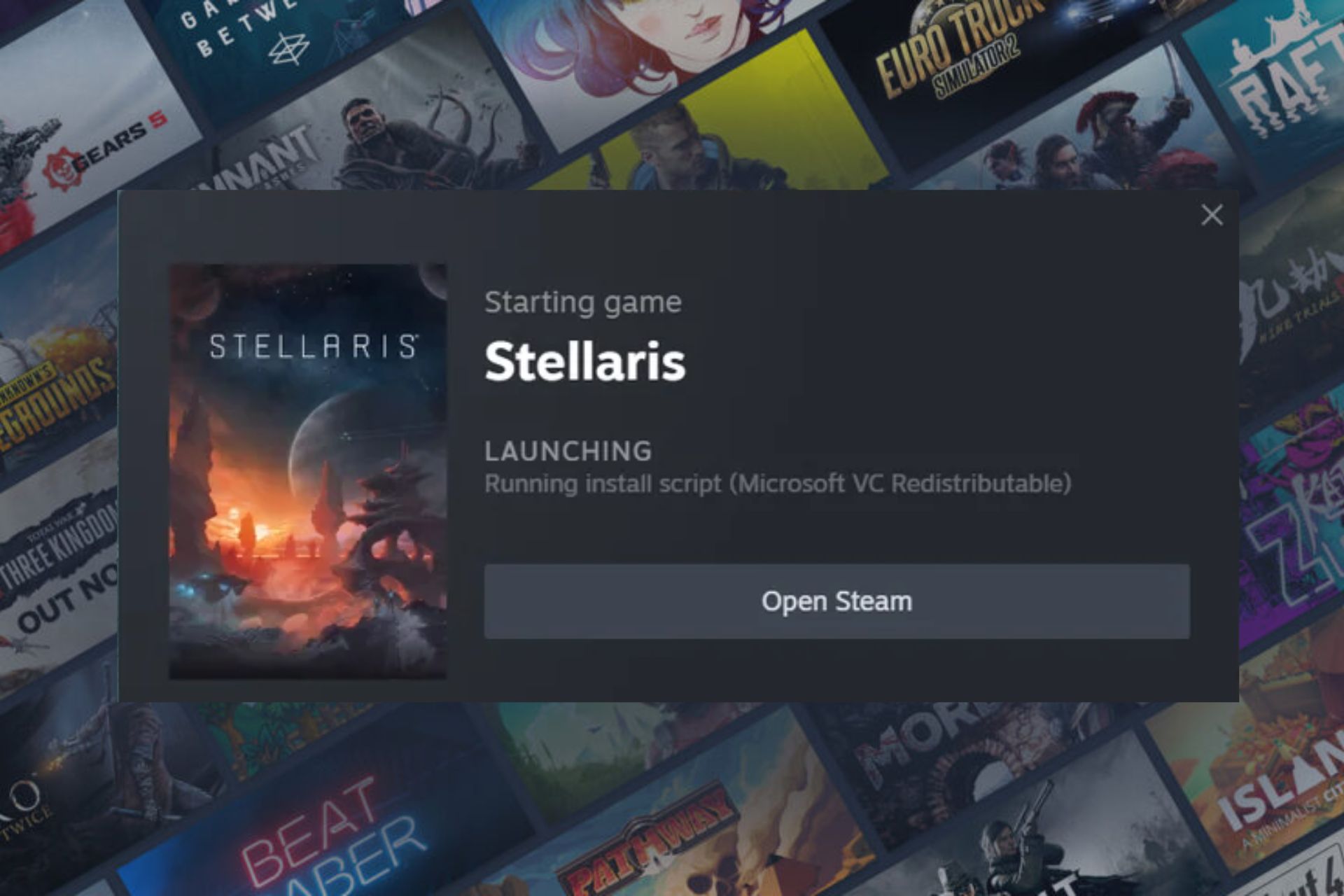Chorus game review: Gorgeous fast-paced space combat
11 min. read
Updated on
Read our disclosure page to find out how can you help Windows Report sustain the editorial team Read more
Key notes
- Chorus is a fantastic looking open-world space combat game with lightspeed action
- Play as dual protagonists Nara and her sentient AI starfighter, Forsa, and strike back at the cult you once belonged to.
- Explore stunning environments and take on side quests to learn more about the universe.

Chorus is a brand new open-world space adventure by Deep Silver Fishlabs, in which you play as Nara and her sentient starfighter Forsa. You were once the deadliest warrior for an evil space cult but now you’re their most-wanted fugitive. Take part in zero-G dogfights while wielding various weapons and abilities and explore fantastic-looking environments.
I’m normally not the biggest fan of aerial combat, mostly because it’s very easy to lose your bearings and it can become nauseating simply trying to get behind your enemies to attack them from behind. But somehow, Chorus managed to avoid that issue altogether and I found it hard to put the game down even after hours of playing. Let’s dig into the review and find out why.
A sci-fi story with space magic
Not unlike the Star Wars universe, Chorus also has certain people who have special abilities, and obviously, you play as one of them. Nara has undergone rites that grant her special powers like sensing your environment for things to interact with, but also less peaceful skills like teleporting behind enemies, blasting them with force lighting (yes, really), and launching yourself through hostile starfighters like a human laserbeam.
Because she’s so adept at using her abilities and also because of well-synchronized she is to Forsaken, her AI companion that lives in her starfighter, she’s become the weapon of choice for the Circle, a space cult that wants to indoctrinate everyone to follow their beliefs.
When they asked her to destroy an entire planet and kill billions of people, something snapped in her and she became a fugitive who’s been hiding among a small resistance force. After a few years of rest, the cult comes chasing after you and this drives Nara and Forsa to take the fight to them instead. It’s a classic redemption arc.
There are a lot of similarities between Chorus and the Star Wars saga, with Nara and her fellow Elders basically replacing the Sith and their planet-destroying tech being a magical alternative to the Death Star. And it seems like certain elements were also borrowed from other popular titles as well, but I don’t blame them for any of those influences because they are all implemented too well.
Nara’s sacrifice
One thing that also struck me as familiar, was Nara’s internal whispering voice. While she has regular talks with other people and even her ship, you also get some insights into what she’s really thinking through her whispers.
It reminded me a lot of Hellblade: Senua’s Sacrifice where you also get (multiple) voices betraying your inner thoughts and fears. It helps you understand the character and her motivations and as the game progresses, she becomes more and more likable, despite basically starting the game as a mass murderer.
While the voice acting is great, it is extremely difficult to feel empathy for most of the characters. The large majority of them are represented by a helmet-wearing avatar, so they don’t even express emotions, and the ones whose face you do get to see don’t stick around long enough to build a bond with them. It’s just a bit difficult to truly connect to holograms and spaceships instead of actual humans.
Ironically, you do build a strong bond with your starfighter Forsa, however, and after leaving him behind for years, you’ll have to win back his trust and the abilities that you’ve cast aside. The story will take turns between helping people with their personal issues, fighting the war against the cult, and reclaiming your Rites through various challenges.
Your relation-ship (pun intended) starts off shaky but you gradually learn to work together and by the end of the game you even finish each other’s sentences.
Reclaim what was lost
Every game where your character starts off strong but has to go through a process of reclaiming their powers needs some kind of crutch and while the go-to solution is usually amnesia, Nara has intentionally cast aside her offensive powers because she feared them.
Throughout the game, you’ll need to go through the Rites again as you need to bring your full potential if you hope to face the Circle. The most useful power allows you to sense your environments, highlighting objects that are hard to spot in the vastness of space.
An important note here is that you can probe far off into the distance when holding down Y, but you’ll more often need to tap the button to scan your immediate surroundings. This is a review and not a tutorial, but I bring this up because I found myself lost at the start of the game as the latter wasn’t explained in detail and I found it impossible to find a few items during a side-quest.
It also doesn’t help that everything gets the exact same exact icon on your UI. Enemies, allies, and items that you can collect are all indicated on the screen with a downwards triangle.
And while combat can get hectic and takes place at 1080°, it’s kind of impressive how easy I was able to let go of terms like UP or DOWN because, without gravity, it doesn’t really matter.
Forsa controls like a dream and what has been vital to my enjoyment is that you can come to a full stop or even drift in space, giving you unprecedented control over your position and making it easier than ever to chase enemies in aerial dogfights.
Combat feels like a dream
It takes a while to get the hang of all the mobility options you have at your disposal, but once you master your rites it’s one of the most satisfying games to play. There’s nothing quite like drifting through laserbeams, making a quick turn, teleporting behind the enemy, and then blasting them with all your firepower.
Nara is feared and respected for her abilities all throughout this universe, and it’s with good reason. And while facing so many smaller enemies may eventually become repetitive, Chorus also spices things up by having you face giant spaceships that need to be dismantled bit by bit, taking down their shields and then destroying them from within, and it’s honestly a truly empowering feeling.
Upgrade your ship
Facing so much opposition, it’s only natural that you take Forsa into the shop every now and then for upgrades, right? You can upgrade the Hull (HP) and Shield at several hangars, but you can also find upgrades hidden throughout the game world.
Chorus is full of side activities, from unique ones that give you a bit of extra lore on certain characters as well as your own past, to repeatable ones like random skirmishes or salvage quests, each rewarding you with money or modifications.
Luckily you don’t even need to navigate to a hangar to select a different load-out, you can do so at any point in the game. You’re also motivated to pay attention to the set that certain items belong to, as they can provide important benefits if you install multiple of the same type.
The sidequests may just end up in another space-combat encounter, but the base gameplay is so much fun that I didn’t really mind the repetitive gameplay loop.
It’s gorgeous beyond belief
Much like the vacuum of space, Chorus has sights that will take your breath away. I’ve played Chorus on the Xbox Series X and it’s hands down one of the best-looking games I’ve laid my eyes on. You can see far into the distance, there’s always a giant set-piece visual in the backdrop like a ringed planet and the dozens of particle effects all really help to sell the package.
To make matters worse for someone like me, they added a photo mode. I’ve been spending just as much time snapping awesome intergalactic pics as I have blasting away cultists and space monsters. The sights here are a marvel to behold, from black holes slowly sucking in debris in a spiral pattern…
To sprawling space stations with multiple traffic lanes towards warp gates and giant billboards. You can even find some cash in between the buildings if you use your Sense powers. It’s always worth exploring!
A treat for the ears as well
Chorus doesn’t just look great, but you can clearly tell a lot of effort went into the sound design as well. It has a SUPERB main theme that I’ve added to my personal Spotify playlist almost instantly. Seriously: open the Youtube video in a different tab and keep it on loop as you continue reading this review, you won’t regret it.
The voice acting also delivers, but Nara may feel a bit distant at times. She sounds cold and calculated, but that’s kind of what the game expects of her and you can feel her warm up to others near the end through her voice acting. Forsa is the runner-up for the most amount of voice lines but I instantly liked his performance, it’s an AI in a ship, yet he almost comes across as the most human character in the entire game.
In the final arc of the game, you’ll constantly hear Nara and Forsa banter and finish each other’s sentences and it’s honestly amazing that you care about how they get along.
Some minor issues
After a rather slow start and some troubles getting the hang of the drifting, I did start falling in love with Chorus. There are a few minor issues however that still stand in the way of fully enjoying the title.
I already mentioned how the Sense ability could have been explained better and it’s absolutely vital to the progression. A lot of segments will have you experiencing a memory and following a trail to the next one, through visible lines in space. The problem comes when you follow these into a hollowed-out structure and there isn’t a trail leading back out.
I’m usually not the best at orientation in an open world and live by the markers on the minimap telling me where to go, so when you take that crutch away from me, I get lost and it becomes frustrating.
I’m not the only one suffering this issue it seems, as sometimes even the enemies get lost in the tiny spaces and that can become troublesome if your current mission is to kill all the hostiles. They can even get stuck in some of the walls and then you need to either rely on explosive damage with enough splash damage or restart the last checkpoint.
Lastly, I’m the type of player that prefers to clean up all the side quests before flying to the next main objective, but Chorus will set your current quest to the main one if you dare to fly too close to it.
How long to beat and complete
Speaking of quests, how long does it take to beat Chorus? If you’re the type of player that can ignore all the side activities and the amazing photo mode, then you can probably beat the main game in about 15-16 hours.
If you’re going for the full completion and 1000G however, you can easily spend upwards of 24 hours in Chorus. Especially considering the skill-related achievements require you to perform a number of kills using drift, boost, or with a specific weapon.
Final thoughts on Chorus
- Pros
- Amazing graphics and an equally high-quality soundtrack
- The starship controls like a dream and has a ton of cool abilities
- Plenty of content to keep you busy
- Cons
- Easy to get lost at first
- Some issues with enemy AI
Final Score: 4/5
Chorus is an audiovisual feast that plays like a dream. It’s hands down the best space combat I’ve ever had the joy to experience and I’m usually not a fan of the genre. The controls are damn near perfect and I’ve never felt like the game was fighting against me, unlike a lot of other flight-based games.
While the main narrative didn’t really manage to deliver anything truly original, I did end up liking the bond that is formed between Nara and Forsa. And if you truly need a reason beyond what’s mentioned above to play this game, I can’t quite overstate just how stunningly beautiful it is to look at.
Chorus costs around $39.99 and is available on Windows PC, Xbox Consoles, Playstation Consoles, Google Stadia, and Amazon Luna.
*Disclaimer: Reviewed on Xbox Series X. Review copy provided by Koch Media Benelux.


